Last Updated on February 29, 2024 by teamobn
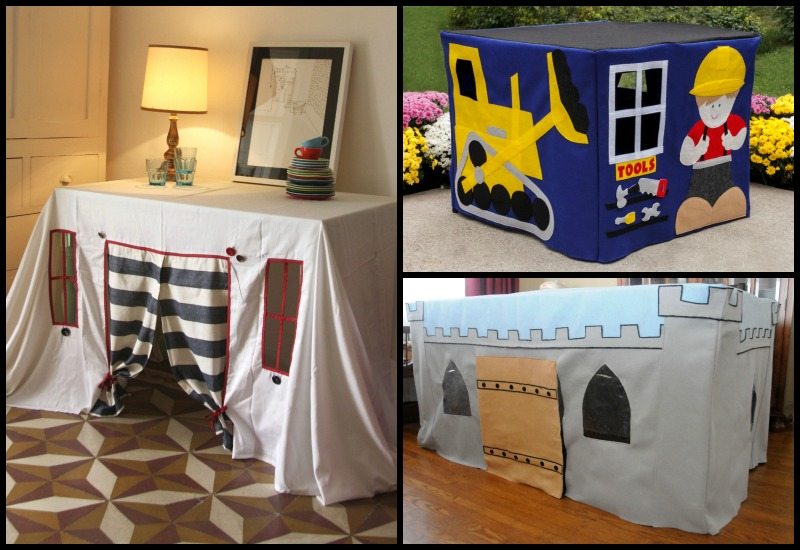
Rainy days bring a lot of boredom to kids. Can’t play outside because of the rain? Rainy days need not be boring with a tablecloth fort.
If you are a parent, then you can do something to keep your children engaged, especially during the weekends when you have ample time. You can sign them up for fun-filled kid’s activities. These activities will keep them engaged and give them the ability to have fun.
You can also set up a few indoor games that your kids can play with you. There are a lot of things that the kids can do despite being forced to stay indoors. An amazing tablecloth fort will be a good idea.
Here’s an idea that is just as much fun as playing outside.
Turn an extra tablecloth into a fort that your kids will surely love. A couple of extra tablecloths and you can create different themes.
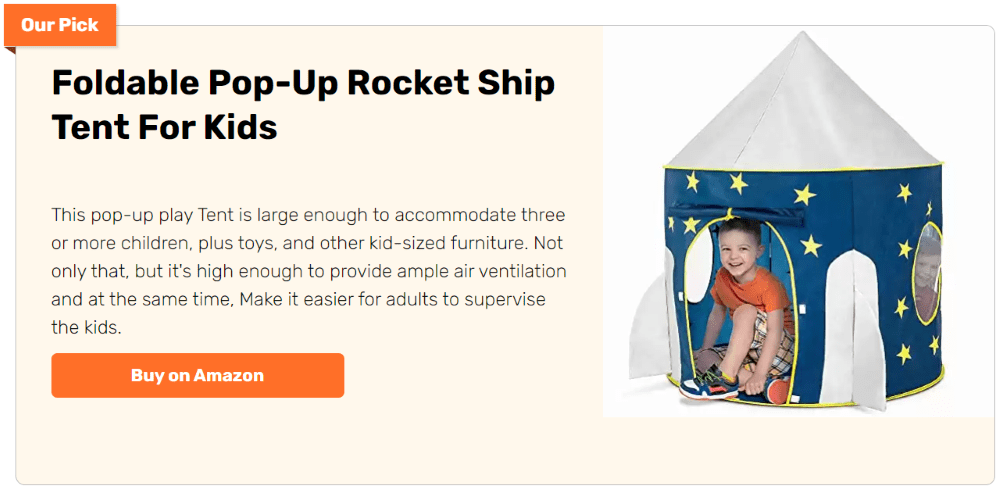
A castle, garden shed, house, circus, store, something that will serve as your child’s tiny home? Imagination is the only limit. 🙂
This is such a fun way to encourage the kids to use their creativity and imagination. Help them build the fort, allowing them to freely explore and think. You’ll be surprised by what they can come up with.
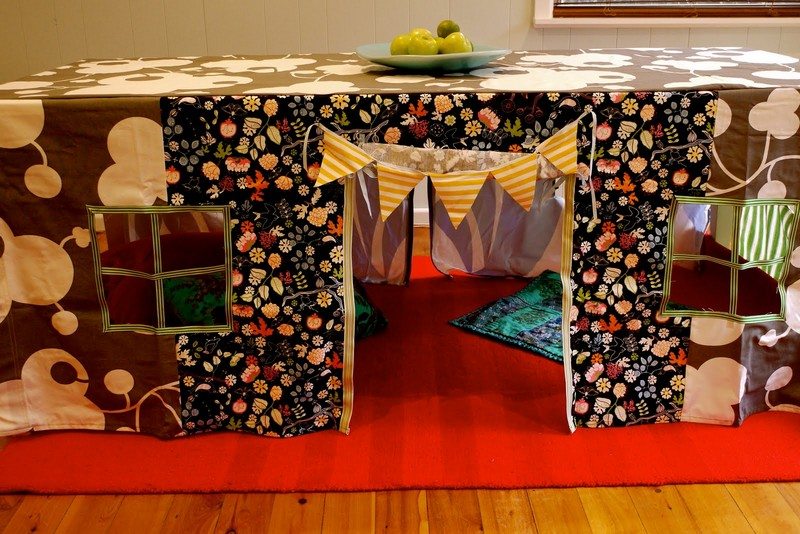
This gallery provides various tablecloth forts that you can use for inspiration. Show them to your kids!
These might excite them enough to convince them to build their own.
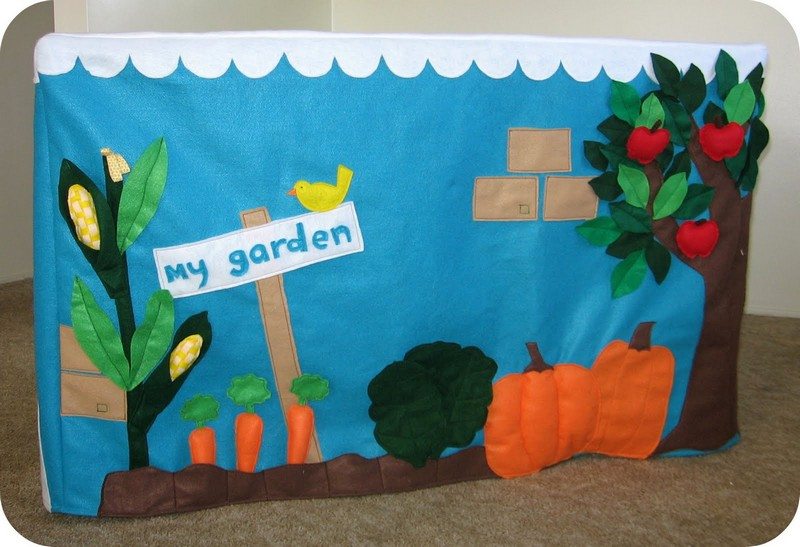
Contents
Fun Tablecloth Fort for Kids
Click on any image to start the lightbox display. Use your Esc key to close the lightbox. You can also view the images as a slideshow if you prefer ![]()
Rainy Day Room
This Rainy Day Room that is made of tablecloths for your kids is perfect for when the weather is rainy or if you have kids that are afraid of thunder and lightning.
You can create a room with a window and a door that can be opened that is made of a Table cloth. It is very simple to put together with little to no cost.
Adding your child’s favorite pillow and stuffed toys will shoo away their fears of thunder and lightning.
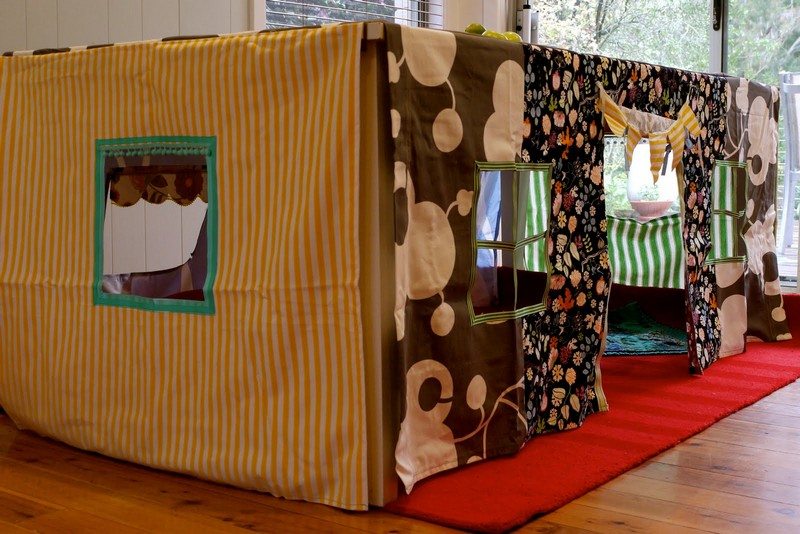

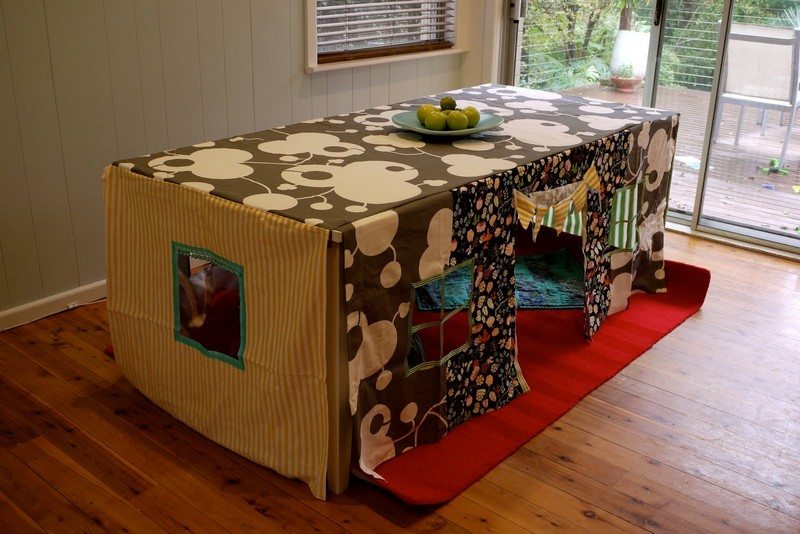
Circus Playhouse
A circus playhouse is just a playhouse decorated with circus characters on the outside and can be full of stuffed animals that your child will surely love.
This playhouse will help your kids get over the fear of the circus if they have one. 🙂
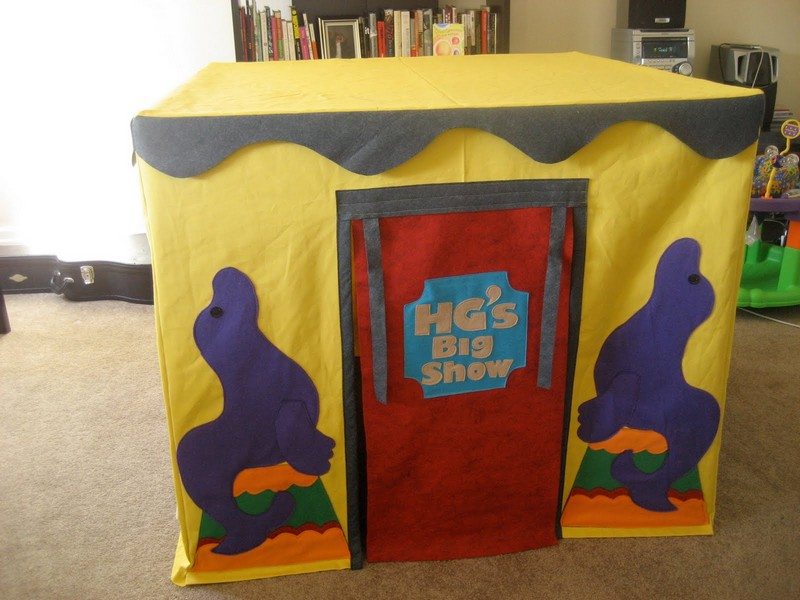
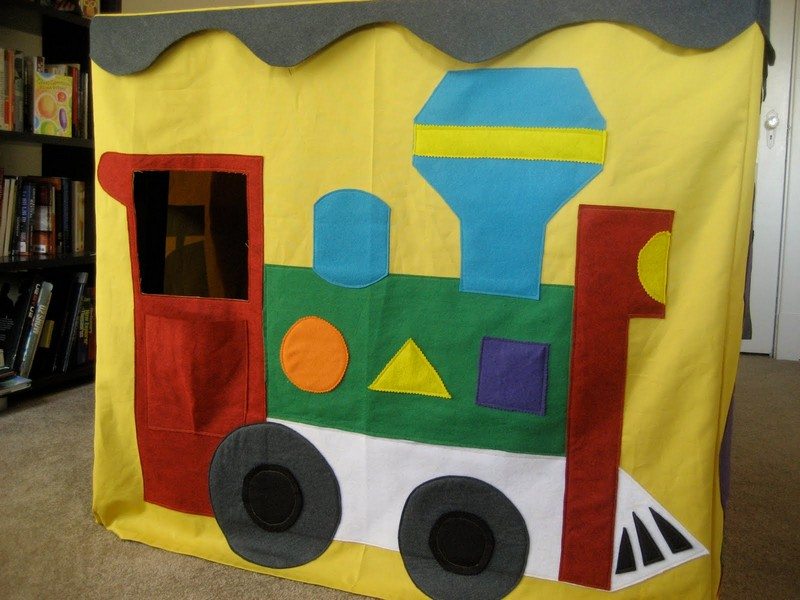
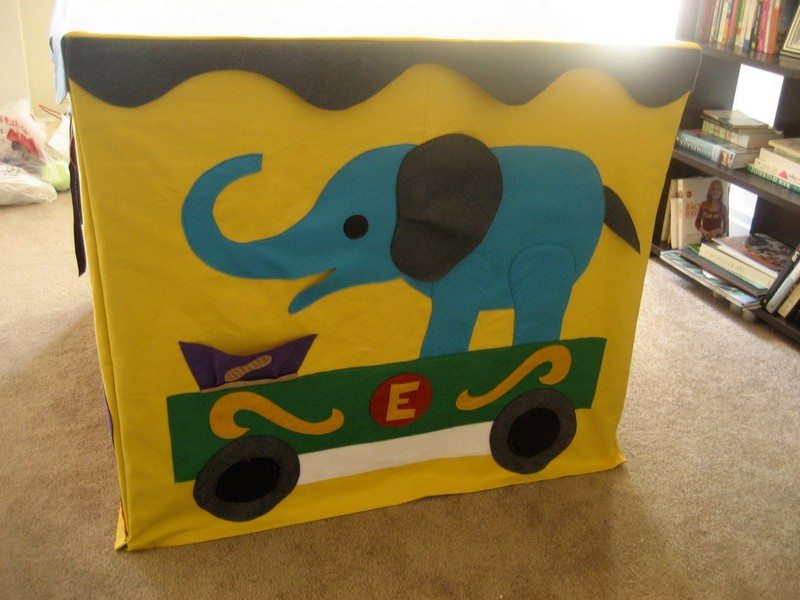
Kiddie’s Table Tent
if your looking for a sturdier tent for your kiddos, considering your tables as the main frame of their tent is a great idea. All you need are tablecloths, clothes glue, and a little bit of creativity.
You won’t need to spend a lot to have a cozy tent for your kids.
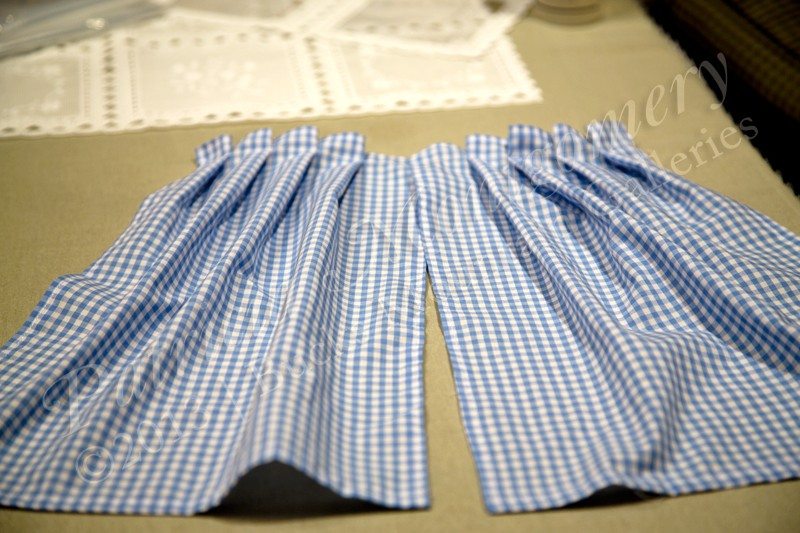
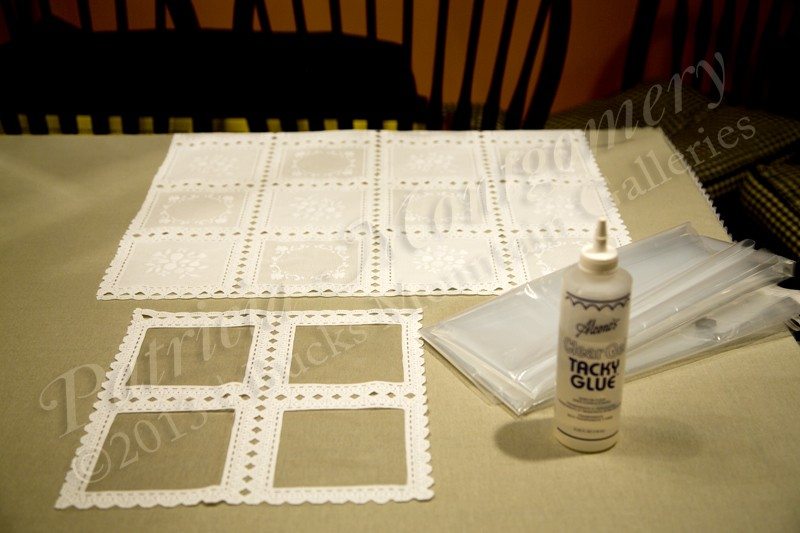
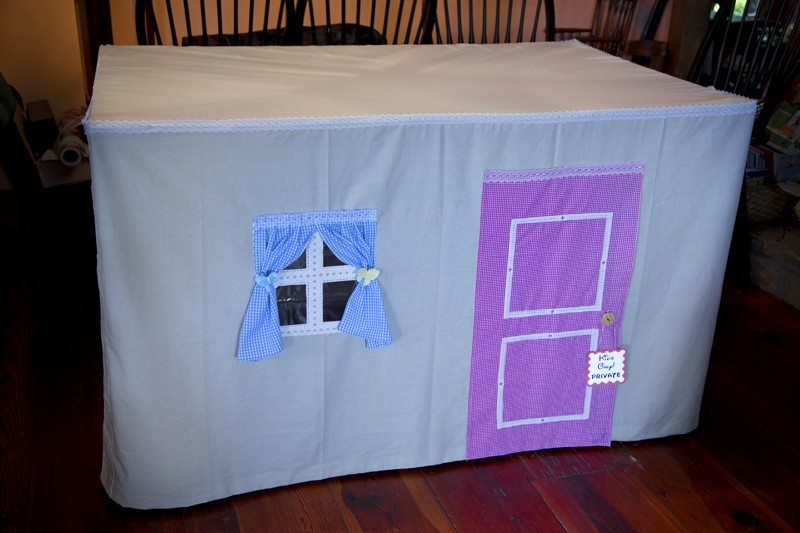
White Tablecloth Play Tent
Children with OCD enjoy playing in a clean environment, and using white cloth for their tent is a plus. They will love the neat look of their playhouse and enjoy even the most boring rainy day!
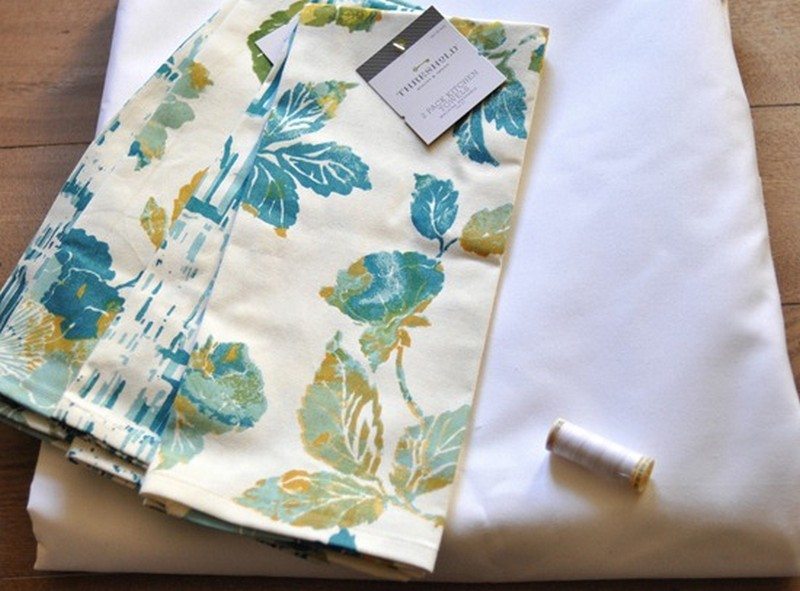
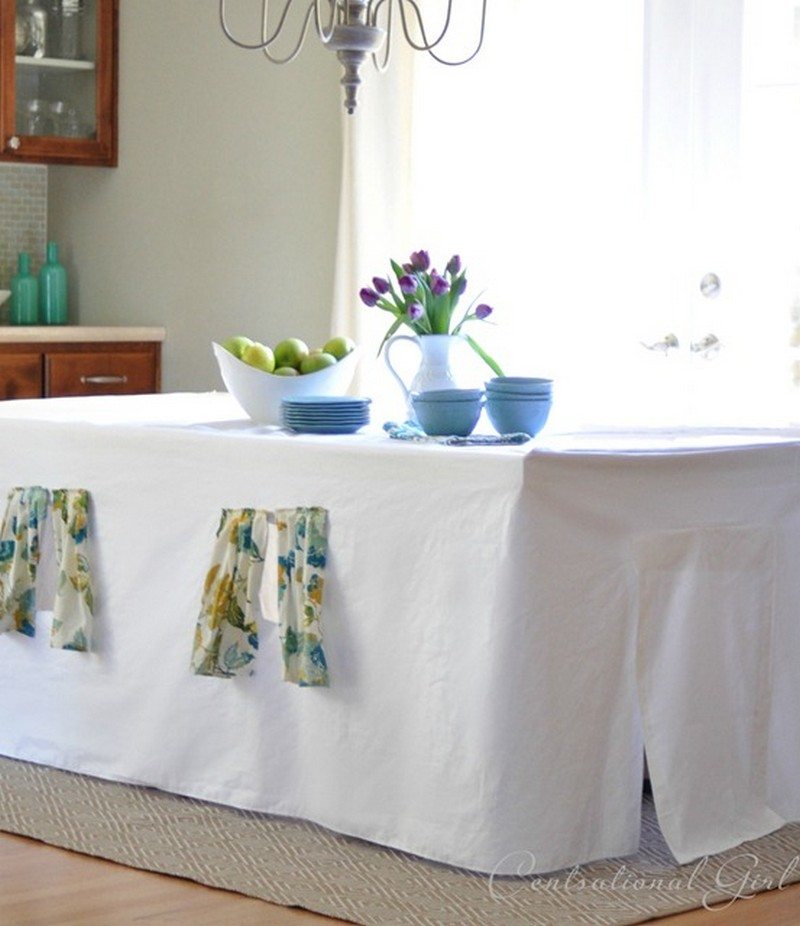
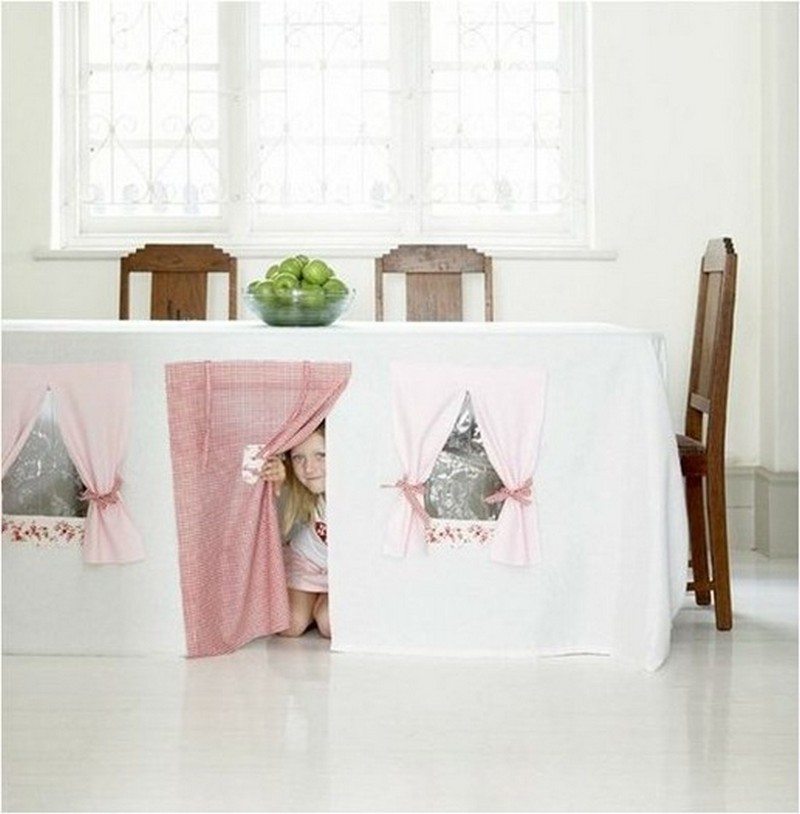
Table Cloth Fort and Tea Party
Transforming a tablecloth fort into a magical tea party setting is a wonderful way to spark your child’s imagination. Start by draping a colorful or patterned tablecloth over a stable structure to create a cozy nook. Inside, set up a small table with tea sets, either real or toy, depending on the age of the children.
You can enhance the ambiance with fairy lights, soft cushions, and miniature decorations to create a fairy-tale atmosphere. Encourage your child to dress up as their favorite character, be it a princess, knight, or fairy, to fully immerse themselves in the experience. This tablecloth fort and tea party can be a splendid way for children to practice social skills, role-play, and even learn table manners in a fun, engaging environment.
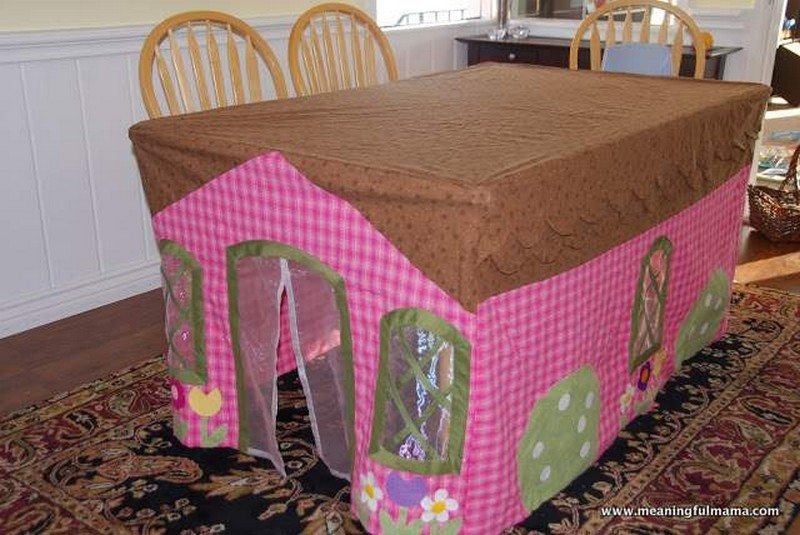
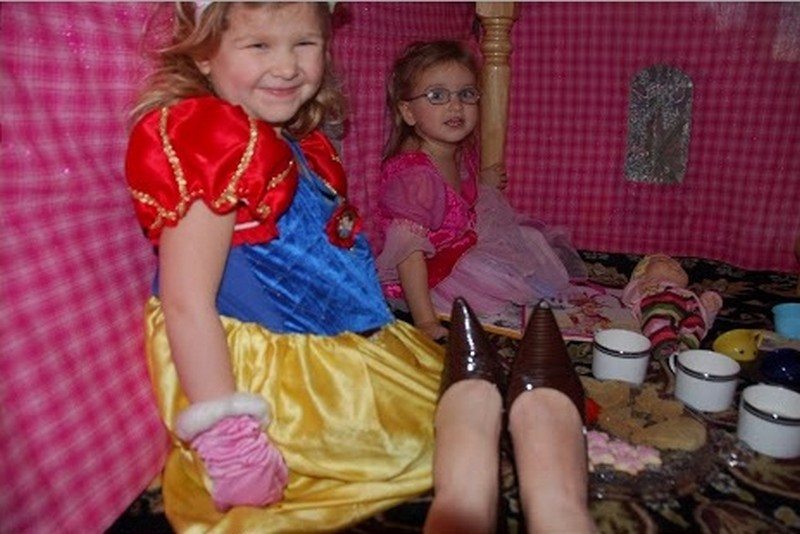
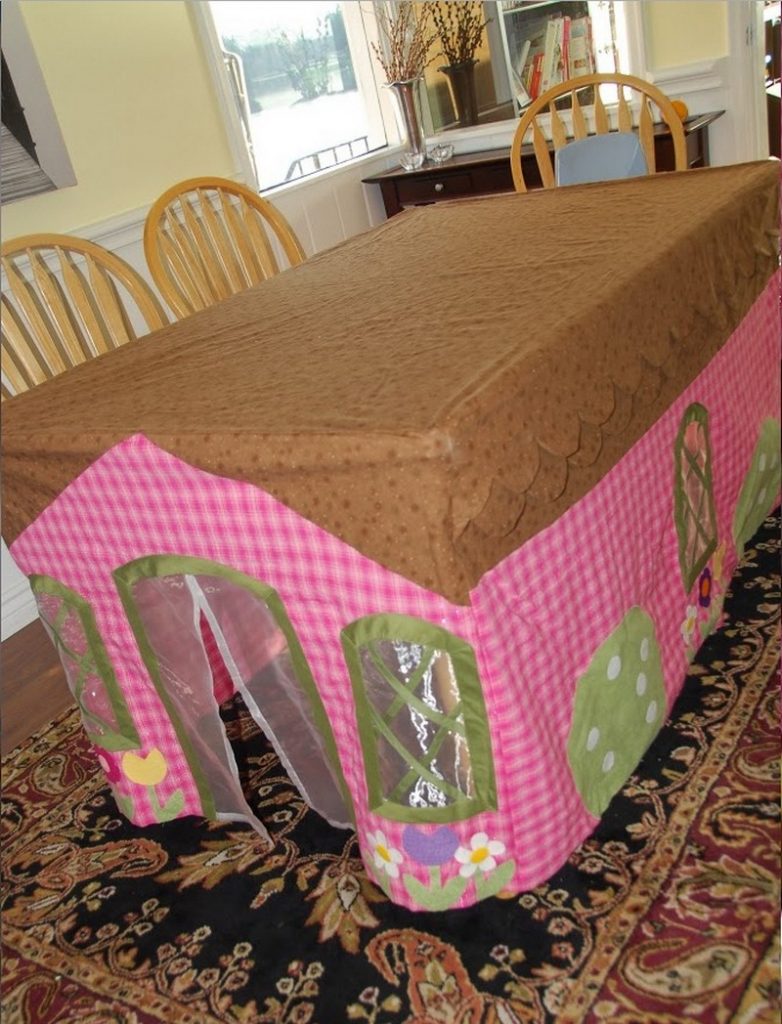
Card Table Play House
The card table playhouse utilizes a simple card table as the base for a cozy playhouse, easily covered with a large tablecloth to create a secluded space. Personalize the playhouse by selecting a tablecloth that matches the theme of the playhouse, whether it’s a castle, a cottage, or a space station. Adding details like windows and doors cut from fabric or felt can make the space feel more realistic.
Inside, homemade or store-bought miniature furniture allows children to set up their own little home, encouraging them to engage in domestic role-play. This setup is perfect for teaching children about household responsibilities in a fun and playful manner, as well as encouraging creativity through interior decoration.
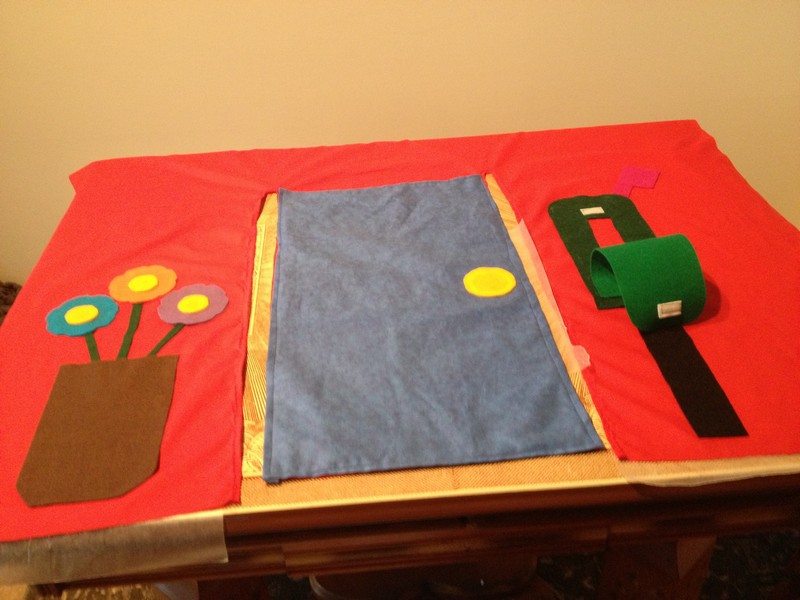
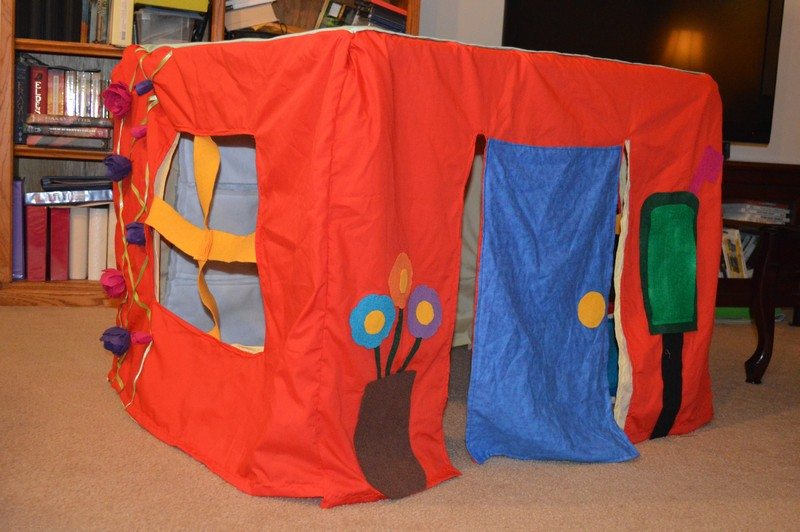

Felt Garden Playhouse
Creating this playhouse using a table cloth and felt paper will give your kiddos a very colorful playhouse.

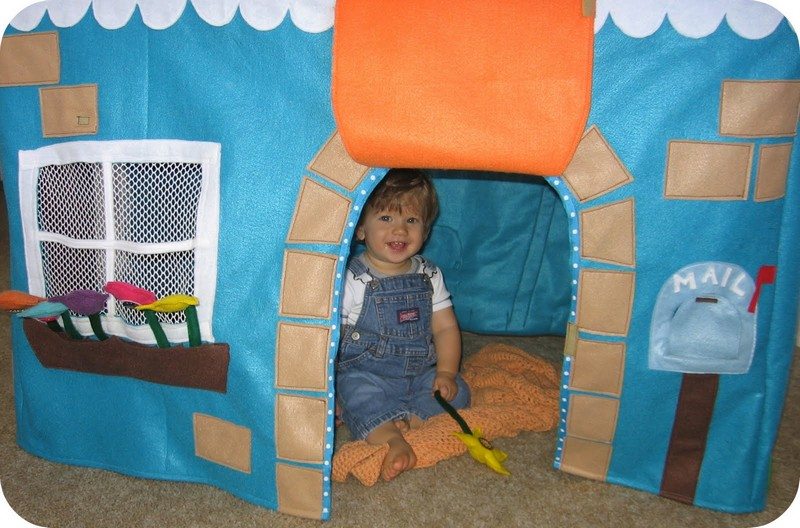
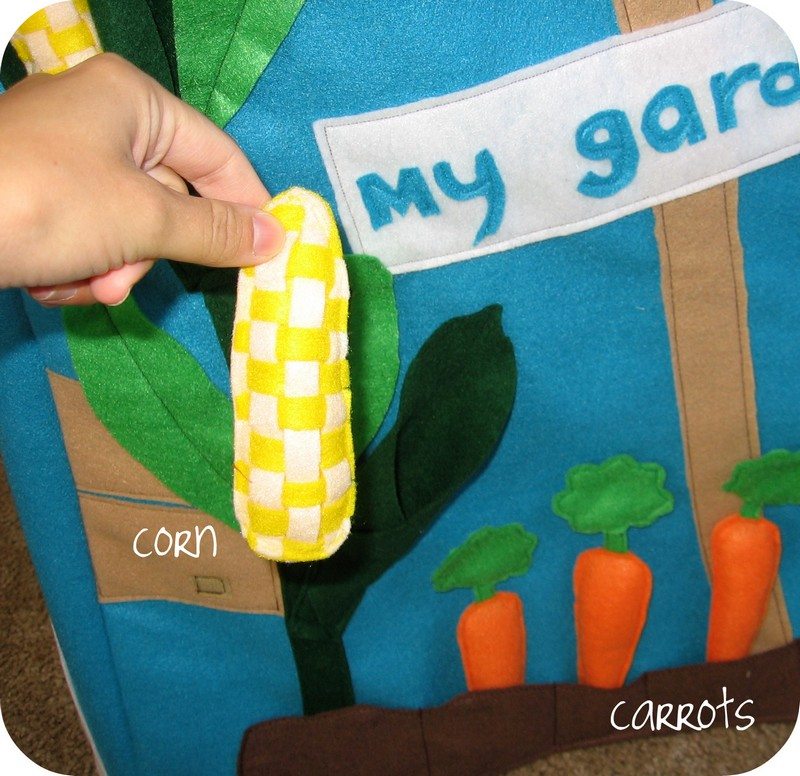
Striped Spring Playhouse Tablecloth
The striped spring playhouse tablecloth is a vibrant and cheerful way to welcome the changing seasons. This type of fort can be particularly appealing during spring when you can match the interior with seasonal decorations like flower garlands, paper butterflies, and pastel-colored pillows. The striped pattern of the tablecloth adds a lively backdrop that can stimulate visual interest and creativity.
Activities inside the fort can include spring-themed crafts, storytelling sessions about renewal and growth, or even a picnic with springtime snacks. This playhouse offers a fantastic opportunity for children to learn about the seasons, explore nature-themed stories, and engage in sensory play with materials that represent spring.
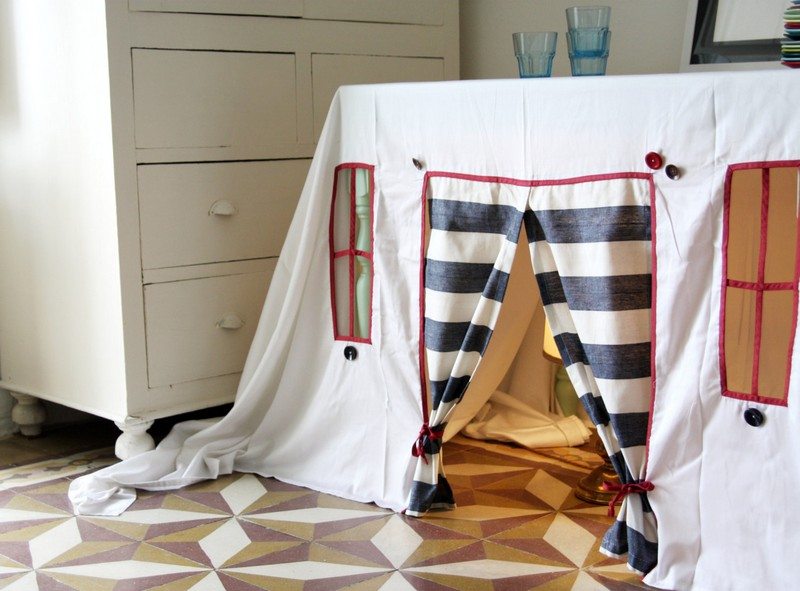
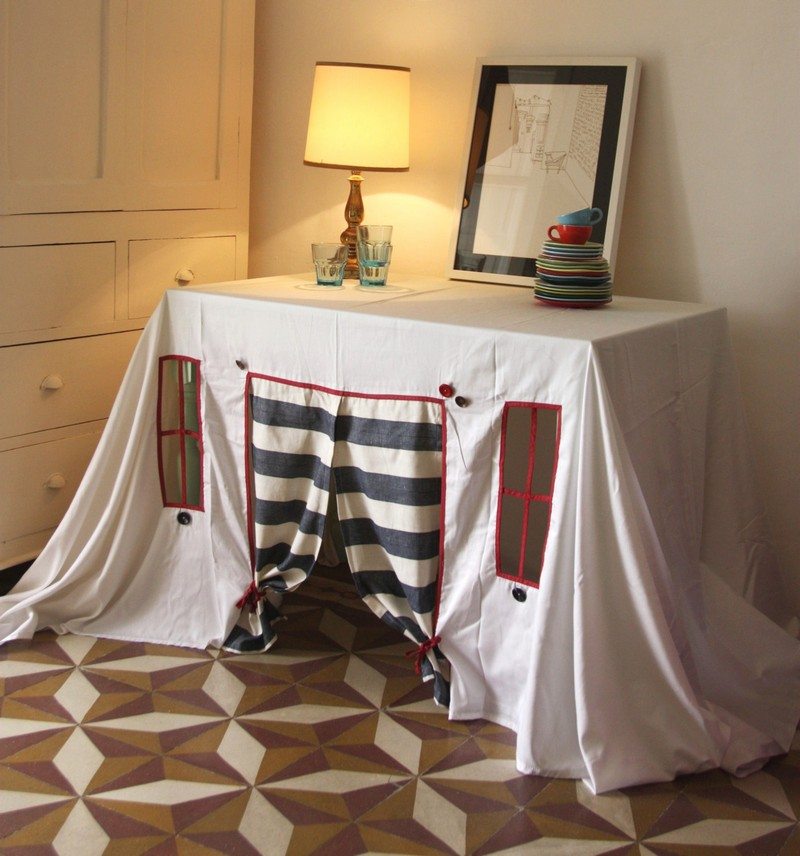
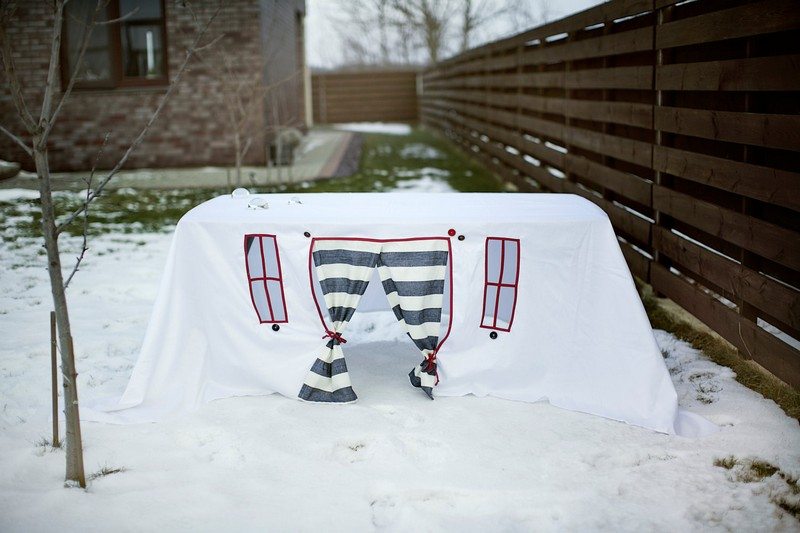
A Castle Fit for Little Kings
Castle design table cloth forts are great for your little kings!
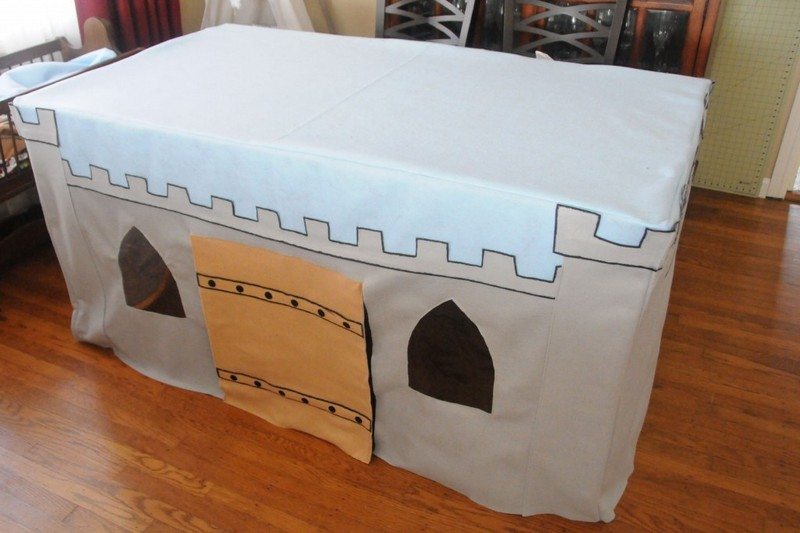


Card Table Construction Site
For children fascinated by the world of construction, transforming a tablecloth fort into a construction site can provide hours of imaginative play. Utilizing a sturdy card table as the base, cover it with a tablecloth printed with construction motifs or in solid colors that resemble a construction site. Inside, toy construction vehicles like excavators, dump trucks, and cranes can move around blocks or sand, simulating real construction tasks.
You can also introduce safety gear such as toy helmets and vests to teach children about the importance of safety on a construction site. This setup encourages children to explore concepts of engineering, teamwork, and problem-solving as they build and navigate their miniature construction site.
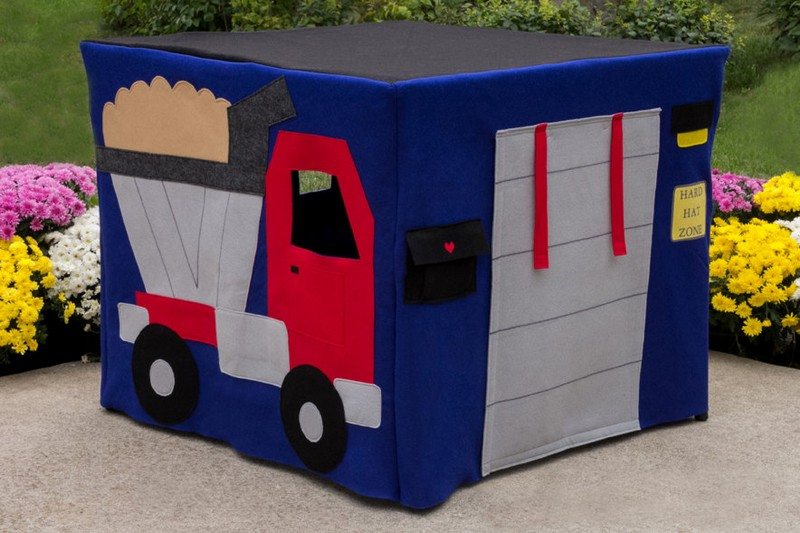
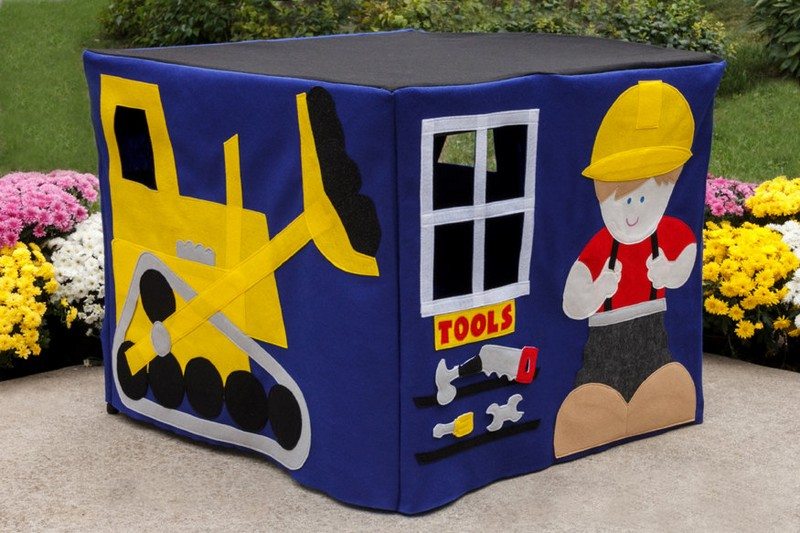
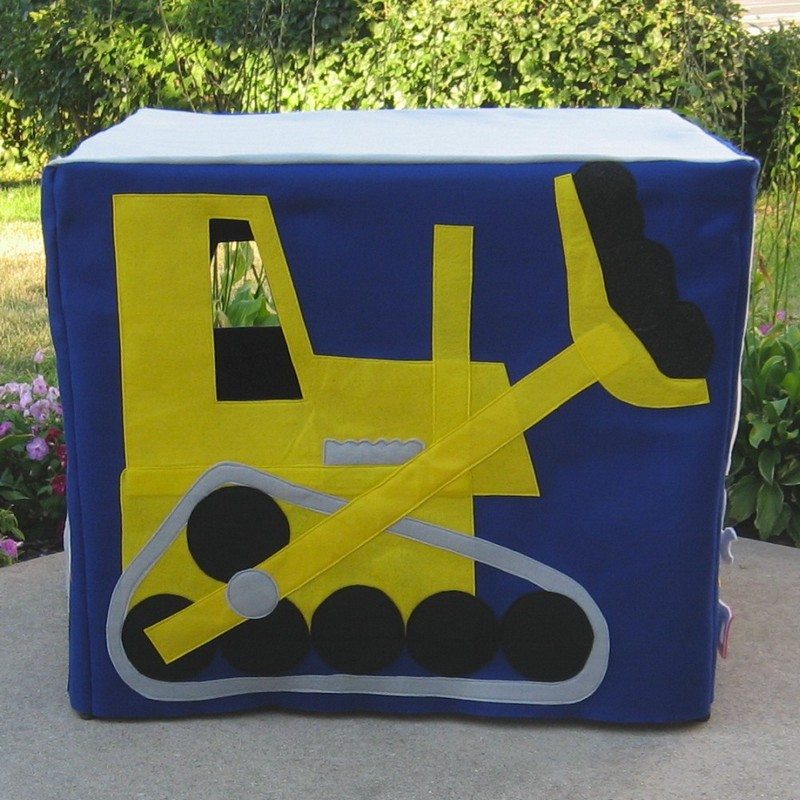
Tablecloth Forts for Special Occasions
Creating tablecloth forts isn’t just a fun activity for a regular day; it’s also a fantastic way to add magic and excitement to special occasions. Transforming an ordinary space into a whimsical play area, tablecloth forts can be themed to celebrate holidays, birthdays, and cultural events, making every occasion memorable for kids and adults alike.
Birthday Bash Forts
Celebrate your child’s birthday by constructing a tablecloth fort that aligns with their interests or party theme. For a pirate-themed party, create a pirate ship fort using blue and black tablecloths, complete with a Jolly Roger flag. Princess parties can be enchanted with pink and gold tablecloths, creating a castle-like ambiance. This personalized touch will make the birthday child feel like royalty on their special day.
Holiday Hideaways
Turn major holidays into an adventure with themed tablecloth forts. For Christmas, build a cozy North Pole cottage using red and white tablecloths, adorned with fairy lights to mimic a winter wonderland. Halloween calls for a spooky haunted house fort, draped in black and orange tablecloths, with faux cobwebs for an eerie effect. These holiday hideaways can be the centerpiece of your celebration, offering kids a themed play area that sparks their imagination.
Cultural Celebration Canopies
Introduce children to the beauty of global cultures through themed tablecloth forts. Create a colorful Dia de los Muertos sanctuary with vibrant tablecloths and traditional decorations, or construct a Lunar New Year fort, using red and gold fabrics, to teach children about this significant Asian festival. This provides a fun play area and educates children on the richness of world cultures.
Seasonal Sensations
Celebrate the changing seasons with a fort reflecting the natural world’s beauty. A springtime fort can be adorned with floral tablecloths and paper flowers, creating a garden-like retreat. For autumn, use orange, yellow, and brown tablecloths to construct a cozy fall fort, perfect for reading and relaxing. These seasonal sensations offer a unique way to appreciate the changes in the environment.
Starlight Cinemas
Transform your tablecloth fort into a starlight cinema for a movie night. Use dark tablecloths to create a blackout tent, and add twinkling string lights to mimic a starry night. Inside, set up a portable projector and cushions for a cozy movie-watching experience. This can be a special treat for sleepovers or family movie nights, providing a unique viewing experience that kids will love.
Tablecloth forts provide a versatile and imaginative way to celebrate special occasions, making every event a memorable adventure. By incorporating these themed forts into your celebrations, you’re not just creating a play area, but a magical world where children’s imaginations can soar.
DIY Tablecloth Fort Kits
In imaginative play, tablecloth forts stand out as a timeless and creative activity that children of all ages can enjoy. To streamline the fort-building process and ensure you’re always ready for an impromptu adventure, assembling a DIY Tablecloth Fort Kit is a brilliant idea.
Here’s how to create your kit, ensuring endless fun and imaginative play.
Gathering Your Supplies
The first step in assembling your kit is to gather all the necessary supplies. Opt for durable, lightweight tablecloths that are easy to drape and secure. Include a variety of sizes and colors to allow for creativity. Alongside tablecloths, your kit should contain:
- Clips and Clamps: To secure tablecloths to furniture without causing damage.
- String Lights: For adding a magical touch to forts, especially for evening play.
- Pegs and Rubber Bands: For attaching tablecloths or to small objects.
- Suction Cups with Hooks: Ideal for hanging tablecloths from windows or smooth surfaces.
- Safety Pins: For quick fixes or attaching elements securely.
Creative Add-Ons
To elevate the tablecloth fort experience, include some creative add-ons in your kit. These can be:
- Themed Decorations: Depending on the interest of your children, include items that can turn a simple fort into a castle, spaceship, or secret hideaway.
- Battery-Powered Lanterns or Flashlights: Children can use safe lighting options to illuminate their forts.
- Fabric Markers or Washable Paints: For decorating and personalizing the forts, fostering creativity and ownership.
- Cushions and Blankets: For creating a cozy interior, perfect for reading, playing, or simply relaxing.
Storage and Organization
Choose a large, durable storage bin or backpack to house your DIY Tablecloth Fort Kit. This ensures everything stays together, making it easy to grab and go whenever inspiration strikes. Label each item or create a checklist that can be kept inside the kit, ensuring that after each use, every piece makes its way back for next time.
Usage Guide
Include a simple, visual usage guide with your kit. This guide can offer basic construction tips, safety reminders, and inspiration for different forts. It’s a helpful addition for encouraging independent play and developing problem-solving skills.
Customization Tips
Encourage customization by including tips on integrating household items into fort designs. Chairs, tables, and even broom handles can become part of the structure, and the guide can provide ideas on incorporating these elements safely and creatively.
By assembling a DIY Tablecloth Fort Kit, you’re not just preparing for a fun day but creating an opportunity for learning, growth, and family bonding. These kits serve as a launchpad for creativity, allowing children to explore, design, and imagine in the comfort of their homes. Whether it’s a rainy day or a sunny afternoon, a tablecloth fort can turn any day into an adventure.
Storytelling and Role-Play in Forts
Tablecloth forts provide a unique stage for storytelling and role-play, transforming a simple play area into a realm of endless possibilities. Within the cozy confines of these forts, children can embark on grand adventures, embody their favorite characters, and unleash their creativity.
Here’s how to integrate these dynamic activities into tablecloth fort play.
Setting the Stage
Creating the right ambiance is crucial for immersive storytelling and role-play. A tablecloth fort offers a versatile setting that can be easily adapted to any story or character. Use different colored tablecloths to set the mood or theme of the story. For example, blue and green tablecloths can mimic an underwater world or a lush forest. Incorporating props and decorations can further enhance the environment, making the experience more engaging.
Choosing Your Adventure
The beauty of storytelling and role-play in tablecloth forts is that the possibilities are limitless. You can:
- Draw from Classic Tales: Reenact scenes from beloved fairy tales, myths, or children’s books, allowing children to step into the shoes of their favorite heroes or heroines.
- Create Original Stories: Encourage children to create their own stories, developing characters, settings, and plots that are uniquely theirs.
- Use Role-Play Prompts: Provide prompts or scenarios encouraging children to think creatively, solve problems, and develop narratives.
- Incorporate Educational Themes: Choose adventures that also teach historical events, cultural traditions, or scientific concepts. For instance, setting a story in ancient Egypt can introduce children to pyramids, pharaohs, and hieroglyphics.
- Interactive Story Maps: Create a visual map that outlines the story’s journey. As children move through the plot, they can physically move characters or objects on the map, adding a tactile element to the narrative.
- Choose Your Own Adventure: Offer children choices at key points in the story, allowing them to decide the direction of the narrative. This not only makes the experience more interactive but also teaches decision-making skills.
Role-Play as Learning
Role-play in tablecloth forts is an effective way for children to explore various roles and perspectives. Through this imaginative play, they can:
- Practice Social Skills: Negotiating roles, following storylines, and interacting with peers or family members in character helps children practice communication and empathy.
- Explore Emotions: Role-playing different scenarios allows children to safely explore a wide range of emotions, learning to express and manage them in a supportive environment.
- Problem-Solving Scenarios: Integrate challenges or puzzles into the story that require teamwork and critical thinking to solve. This approach encourages logical reasoning and collaborative skills.
- Historical Figures and Periods: Role-playing as historical figures or living in different periods can provide a fun, immersive way to learn history. Children can explore the daily life, significant events, and important inventions of the past.
- Language and Communication Skills: Introduce new vocabulary words or phrases related to the story’s theme, encouraging children to use them in context. Introduce simple words or greetings in the relevant language for stories set in other countries.
Storytelling Tools and Techniques
To enrich the storytelling experience, consider incorporating these tools and techniques:
- Story Dice or Cards: Use story dice or cards to randomly select characters, settings, or plot elements, adding an element of surprise and encouraging improvisation.
- Puppetry and Shadow Plays: Use hand puppets or create shadow figures with flashlights against the walls of the fort, adding a visual element to the storytelling.
- Music and Sound Effects: Background music or simple sound effects can enhance the atmosphere, making the story more immersive.
- Digital Storytelling: Incorporate simple digital tools like tablets or smartphones to record the stories created in the fort. Children can make videos or audio recordings, enhancing their digital literacy skills.
- Book-Making: Guide children to write or draw their story in a blank book after role-playing. This reinforces the narrative they created and introduces elements of literary structure and illustration.
- Sensory Experiences: Enhance the storytelling environment with sensory elements such as scented candles (for older children under supervision), textured fabrics, or background sounds that match the story’s setting. This multisensory approach can deepen immersion and make the narrative more memorable.
Encouraging Participation
Foster an inclusive environment where every child feels comfortable participating. Encourage shy children by assigning them roles that do not require speaking at first or by letting them control puppets or props as their way of contributing to the story.
Storytelling and role-play in tablecloth forts offer a magical escape into worlds of imagination. This dynamic form of play not only entertains but also nurtures children’s creative, social, and emotional development. Kids can explore stories and roles in a safe, imaginative, and endlessly fun environment by setting the stage in their tablecloth fort.
Conclusion
Tablecloth forts are more than just a playful hideaway; they are a cornerstone of childhood creativity and learning. These simple structures provide a versatile platform for imaginative play, social interaction, and educational opportunities. Children engage in role-play within these forts, developing their communication skills, empathy, and understanding of the world around them.








